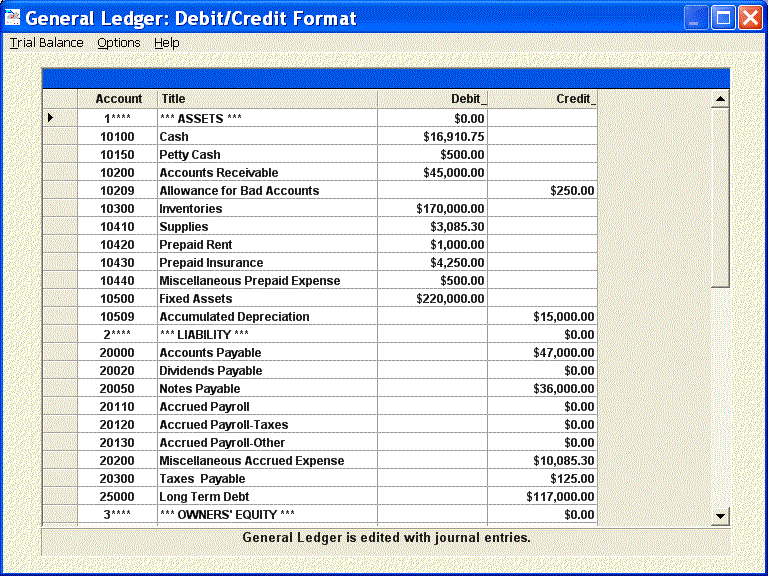SPECIFIC TOPIC: Meaning and format
REFERENCE BOOKS:
Macmillan JSS1 Business Studies by Awoyokun A.A et al .Pages 61-67
WABP JSS Business Studies 1by Egbe T. Ehiametalor. Pages 58-65
Spectrum Business Studies by Eno L.Inanga and Ebun C.Ojo Pages 67-74
PERFORMANCE OBJECTIVES: At the end of the lesson, students should be able to:
state the meaning of double entry
state the principle of double entry
draw the format of double entry account
CONTENTS:
Double entry is a system of book-keeping in which transactions are first recorded in both the debit and credit sides of the ledger at the same time.
The double entry principle states that - For every debit entry there must be a corresponding credit entry and vice versa.
Double entry records are kept in a book called a ledger and each page in a ledger is called an account.
EVALUATION:
What is book-keeping?
state double entry principle
Draw the format of a double entry account.
HOME-WORK: what are asset, liability and capital?
LESSON 64
MAIN TOPIC: DOUBLE ENTRY BOOK-KEEPING
SPECIFIC TOPIC: Golden rule of double entry
REFERENCE BOOKS:
Macmillan JSS1 Business Studies by Awoyokun A.A et al .Pages 61-67
WABP JSS Business Studies 1by Egbe T. Ehiametalor. Pages 58-65
Spectrum Business Studies by Eno L.Inanga and Ebun C.Ojo Pages 67-74
PERFORMANCE OBJECTIVES: At the end of the lesson, students should be able to:
state the meaning of asset, liability and capital
state and apply the golden rule in book-keeping
CONTENTS:
An Asset is anything of value that is owned by a business
A Liability is an amount owed by a business to others.
Capital is the total investment in a business.
GOLDEN RULE:
Debit- The account that receives
Credit- The account that gives
Capital account is always on the credit side
EVALUATION:
What are assets, liability and capital
Give examples of asset and liability
HOME-WORK: State the double entry principle
LESSON 65
MAIN TOPIC: DOUBLE ENTRY BOOK-KEEPING
SPECIFIC TOPIC: Exercises on double entry book-keeping
REFERENCE BOOKS:
Macmillan JSS1 Business Studies by Awoyokun A.A et al .Pages 61-67
WABP JSS Business Studies 1by Egbe T. Ehiametalor. Pages 58-65
Spectrum Business Studies by Eno L.Inanga and Ebun C.Ojo Pages 67-74
PERFORMANCE OBJECTIVES: At the end of the lesson, students should be able to:
solve questions relating to double entry book-keeping correctly
CONTENTS:
Question 3 Spectrum Business Studies by Eno L.Inanga and Ebun C.Ojo Page74
Question 1 and 2 WABP JSS Business Studies 1by Egbe T. Ehiametalor. Pages 64
EVALUATION:
Question 5 Spectrum Business Studies by Eno L.Inanga and Ebun C.Ojo Page74
HOME-WORK: what are ledgers?
further studies
http://en.wikipedia.org/wiki/Double-ent ... ing_system
http://www.dummies.com/how-to/content/t ... eping.html
http://www.accountingcoach.com/accounti ... lanation/5
http://accounting-simplified.com/double ... nting.html
MAIN TOPIC: LEDGER
SPECIFIC TOPIC: Meaning and classification
REFERENCE BOOKS:
Macmillan JSS1 Business Studies by Awoyokun A.A et al .Pages 65-67
WABP JSS Business Studies 1by Egbe T. Ehiametalor. Pages 61-65
Spectrum Business Studies by Eno L.Inanga and Ebun C.Ojo Pages 75-84
PERFORMANCE OBJECTIVES: At the end of the lesson, students should be able to:
state the meaning of ledger
state the classification of ledger
draw the format of ledger
CONTENTS:
A general ledger account is an account or record used to sort and store balance sheet and income statement transactions. Examples of general ledger accounts include the asset accounts such as Cash, Accounts Receivable, Inventory, Investments, Land, and Equipment. Examples of the general ledger liability accounts include Notes Payable, Accounts Payable, Accrued Expenses Payable, and Customer Deposits. Examples of income statement accounts found in the general ledger include Sales, Service Fee Revenues, Salaries Expense, Rent Expense, Advertising Expense, Interest Expense, and Loss on Disposal of Assets.
Some general ledger accounts are summary records which are referred to as control accounts. The detail that supports each of the control accounts will be found outside of the general ledger in what is known as a subsidiary ledger. For example, Accounts Receivable could be a control account in the general ledger, and there will be a subsidiary ledger which contains each customer's credit activity. The general ledger accounts Inventory, Equipment, and Accounts Payable could also be control accounts and for each there will be a subsidiary ledger containing the supporting detail.
The ledger is a principal book of account in which all the transactions that take place in a business organisation are recorded.


CLASSFICATION OF LEDGER
Ledger accounts can be divided into
Personal account: These are the accounts for debtors and creditors.
Impersonal account: This can further be divided into real and nominal account.
Nominal accounts: These are accounts of income and expenditure such as wages, rent, electricity etc. They cannot be seen or touched.
Real account: These are account relating to property or material objects. E.g land, car, plant etc.
EVALUATION:
What is ledger?
mention two classification of ledger with examples
Draw the format of a ledger.
HOME-WORK: what is typewriting?
further studies
http://accounting-simplified.com/ledger-accounts.html
http://accountingexplained.com/financia ... r-accounts
http://www.wikihow.com/Write-an-Accounting-Ledger
http://businessbuilding.com.au/certification/unit/59
http://quizlet.com/3212847/accounting-v ... ash-cards/
http://juris.com/help/Subsystems/defaul ... unting.htm
practice test
http://www.glencoe.com/qe/qe124altproce ... hp?qi=3282
http://www.proprofs.com/quiz-school/qui ... &quesnum=1
http://highered.mcgraw-hill.com/sites/0 ... _quiz.html
http://highered.mcgraw-hill.com/sites/0 ... _quiz.html
